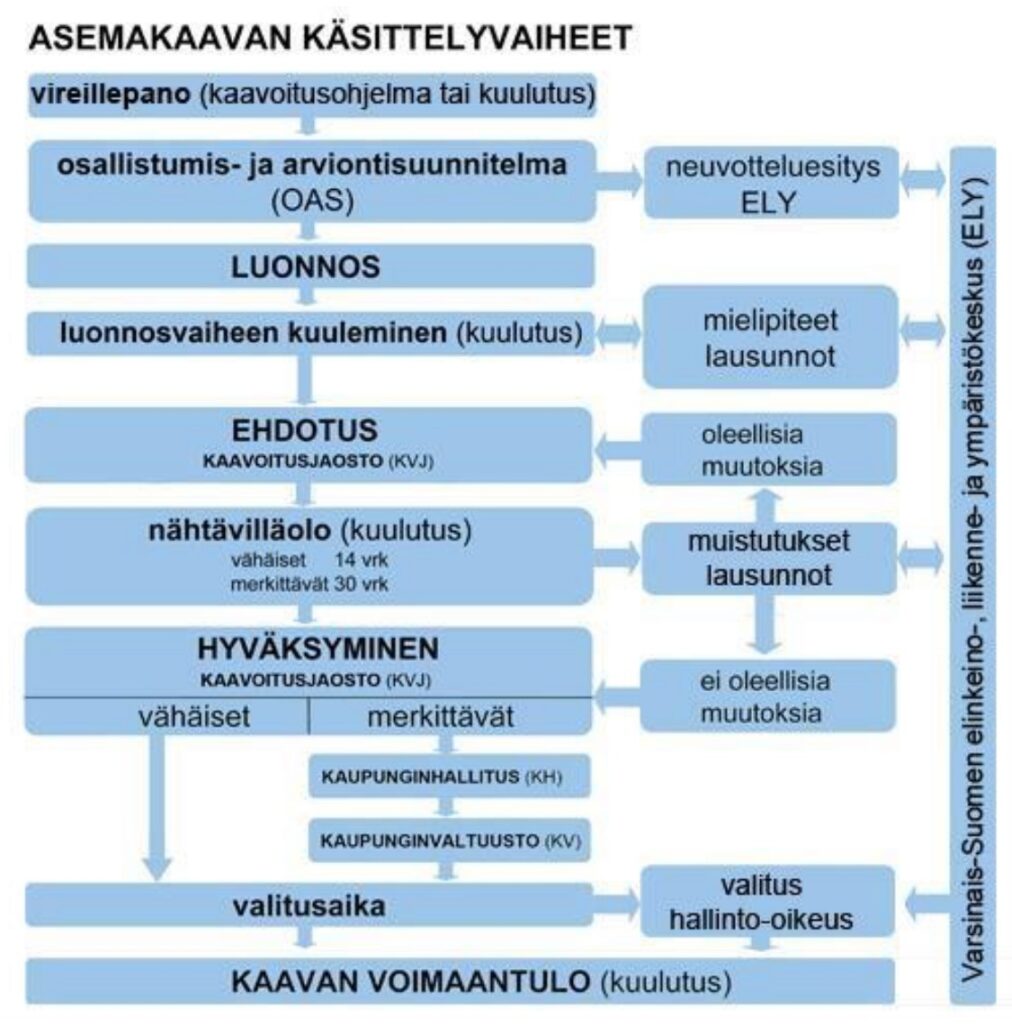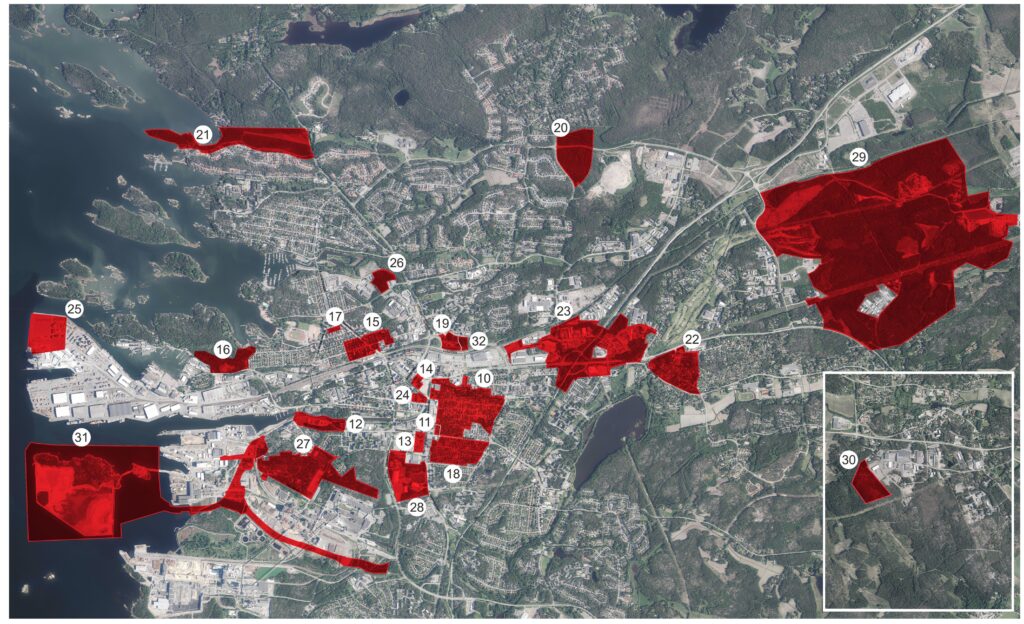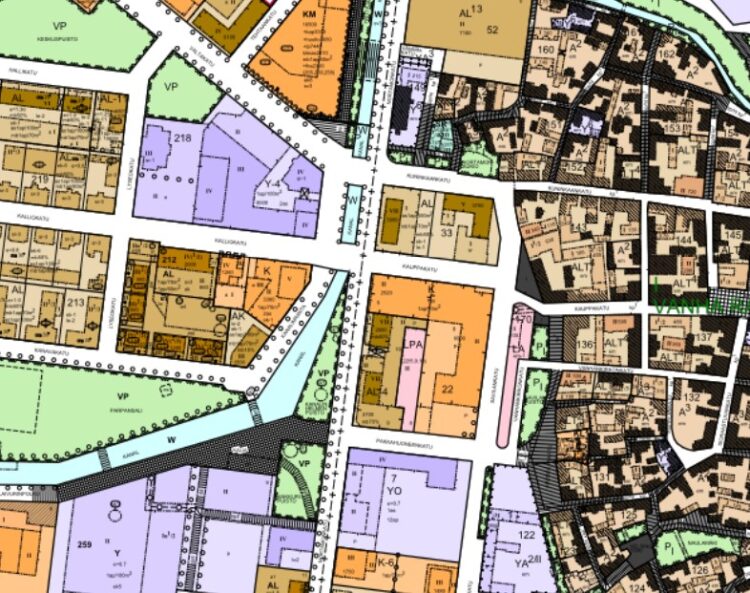Detailed plans
Approved land-use plans and changes to land-use plans
A summary of the existing zoning plans can be found on the City of Rauma map service.
The map service has functions and options that can be found in the top left-hand corner: Menu \ Select background map \ Background map.
The map service provides the zoning regulations and labels for the zoning plans:
Menu \ Select the information displayed on the map \ Maps \ (select the level of the map, e.g. Local Plans, General Plan or Sub-regional Plan) \ Map regulations and areas \ (click with the left mouse button on the desired point on the map) \ Map regulations.
To whom and on what terms
All those whose lives or interests are affected by local detailed planning have the right to take part and have a say in the process.
Background information
A local detailed plan is a detailed description of what will be built in a particular area and how the area will otherwise be used. A building may not be constructed in a manner that is in violation of the local detailed plan. Municipalities are responsible for drawing up local detailed plans in their own areas. The local detailed plan is approved by the local council, but the council’s authority may also be delegated in the standing orders to the municipal board or to a committee. Municipalities must review the local detailed plans on a regular basis and update them, as necessary. The names of streets, parks, recreational areas and squares are verified in the local detailed plan.
The local authority may impose a building prohibition in an area concerning which a local detailed plan is being drafted or amended.
Local detailed planning can be influenced by making an initiative for planning or submitting an opinion on the plan currently under preparation. If the proposed plan impacts a resident’s living or working, the resident has the right to submit a written notice on the plan proposal that is up for public viewing. Residents have the right to lodge a municipal appeal against the decision to confirm the plan.
Stages of the land-use plan process (in Finnish)

Information on planning
Information will ensure that stakeholders have the opportunity to follow and influence the planning process. Municipalities provide information on current planning projects in the annual Planning Review. Information on the start (initiation), public consultation and adoption of a plan is published in local newspapers. Exceptions are made for minor changes to the land-use plan, for which a letter may be sent to the parties concerned.
Participation
The parties concerned are those whose conditions or interests may be significantly affected by the plan. These include landowners, residents and other users of the area covered by the plan. Public authorities and associations are involved when planning concerns their area of activity. If the plan affects more than one municipality, a member of another municipality may also be involved. The planned participation events and basic information on the draft plan are set out in the participation and assessment plan. There are many ways to participate, for example by contacting the planner, attending information and discussion meetings, or by expressing an opinion on the plan when it is open for public consultation.
Cooperation between authorities
The preparation of plans also requires cooperation between authorities. Consultations between the municipal, provincial and national authorities are held on major plans. The purpose of these consultations is to inform the municipality or the provincial government of, among other things, national and important regional land use objectives and the authorities’ views on the need for studies and surveys.
How to appeal
The objectives and interests of the different actors are often conflicting. Dialogue helps to reconcile different views. However, it is not always possible to reach an acceptable outcome for all parties. In such cases, it is possible to appeal against the decision to approve the plan. The right of appeal lies with the parties concerned, members of the municipality, certain associations and the public authorities. The right of appeal is more limited for changes to the land-use plan that have a minor impact.

